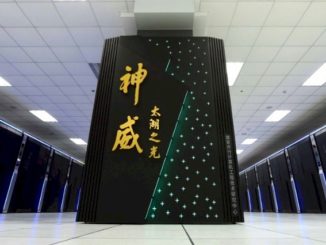
The quantum computing space is replete with big-name companies like IBM, Google, Microsoft, Amazon, and Intel touting incremental but important steps they’re taking to bring the long-promised technology to the fore. Most recently, Google in December announced that, with the introduction of “Willow” chip, its scientists in its Quantum Lab had solved a thorny error correction problem that had bedeviled engineers for decades.
Julian Kelly, director of quantum hardware at Google, called error correction “the end game for quantum computers.”
However, as Google and other vendors continue to spend billions of dollars developing their quantum computing technologies as they piece together systems, D-Wave for years has been building commercial quantum systems that enterprises and research institutions are using. The vendor also has been working hard to be heard among the din.
D-Wave this week made a big noise, announcing that the Jülich Supercomputing Centre at Forschungszentrum Jülich (FZJ) in Germany became the first HPC institution to buy one of D-Wave’s Advantage quantum systems. The 5,000-qubit system will be housed at the center’s Jülich Unified Infrastructure for Quantum Computing (JUNIQ), a public quantum computing user facility.
JSC’s purchase of the Advantage system is a big deal, D-Wave chief executive officer Alan Baratz tells The Next Platform. It not only is yet another proof point in the value and capabilities of the vendor’s quantum annealing technology, but it also is opening up new avenues for D-Wave to get its systems into the hands of organizations.
Beyond Cloud Access
JSC, like other companies and institutions, has been accessing the quantum computing capabilities of Advantage via D-Wave’s Leap cloud-based platform. The supercomputing center has been hosting an Advantage system for several years and has used it for such jobs as studying protein folding, directly mirroring the microscopic interactions of electrons, and developing insights into quantum physical processes during the formation of the universe.
“Up until now, all of our customers have access, our systems through our quantum cloud service and the APIs that we made available within that service,” Baratz says. “But owning their own D-Wave Advantage system means that they will basically have access to all system parameters and can tweak and tune them as they need for their research.”
This will allow the supercomputing center to expand what it does with the system. That includes integrating it with other systems, in particular “Jupiter,” the center’s in-the-works – and Europe’s first – exascale supercomputer. Jupiter, announced in 2022, is now paired with an annealing quantum system.
In addition, when D-Wave releases its Advantage 2 quantum chip in the mid-year timeframe, D-Wave will upgrade JSC’s system.
“It’s an important step for us,” Baratz says. “First of all, here is a very well-respected computational institute in Europe that is basically saying, ‘Not only have we gotten value out of using the system through their cloud service, but now I can see really important research and problems that can be solved when I am able to control all aspects of the system.’”
He added that the upgrade to Advantage 2 also will be significant, likely opening the door for other research centers and government labs to consider buying a D-Wave system.
Open For Business
That’s another key effect for the European supercomputer center buying the Advantage system. As Baratz notes, organizations using D-Wave’s annealing quantum technologies accessed them through the Leap cloud platform. With the JSC buying the system, D-Wave is now allowing companies and institutions to buy its systems.
“We will handle the shipping, the installation, the calibration, setting up of any hybrid solvers that might be of interest to them, and then ongoing maintenance of the system,” he says. “This is not something that has been a part of our business model up until now. Up until now, customers accessed to our quantum computers exclusively through our Leap quantum cloud service. But now we are formalizing this offering to essentially sell systems.”
D-Wave is seeing more interest in and requests for the ability to own an Advantage system, Baratz explains, to the new program essentially formalizes the go-to-market effort around that. The company isn’t backing away from the cloud service, which is still important for users that are more interest in applications and running them to support their businesses. But a research center or government lab may want more control over the quantum processor and tighter integration with their existing system likely will be more interested in buying one.
The vendor also is pressing its advantage against other quantum companies – which are developing gate-model quantum systems rather than annealing machines – by launching its Quantum Uplift Program, which will offer organizations reasons to jump to D-Wave’s computers. The gate-model quantum technologies – as has been D-Wave’s practice – are primarily available via the cloud.
“We know that many customers who have purchased a gate-model system, whether it’s from IBM or Pasqal or QuEra or what have you, are quite frustrated with the fact that the systems are highly unreliable, often unavailable, but more importantly, not capable of solving useful problems. For companies that have a gate-model quantum computer that isn’t delivering for them, we are announcing a program where we will give them incentives to basically switch to a D-Wave Advantage quantum computer.”
Advantage 2 On The Horizon
D-Wave hopped on the annealing quantum train many years ago, giving it a speed-to-market advantage over those vendors on the gate-model track. As Baratz puts it, quantum annealing technology is best at one type of problem: optimization. However, that’s not as limiting as it sounds.
“It turns out that pretty much any problem can be transformed relatively easily into an optimization problem,” he says. “As a result, you program our system by taking your problem, transforming it into the problem that the annealing quantum computer solves, and letting the annealing quantum computer do its thing. So, in some sense, it is that native optimization engine.”
D-Wave is working on creating a gate-model system, and Baratz has heard that some of those gate-model stalwarts are considering building annealing quantum machines. That said, he expects demand for its annealing quantum will grow.
And that demand will become more apparent when Advantage 2 is released, which Baratz said will likely happen something in the first half of the year. D-Wave last year announced the calibration of a 1,200-qubit Advantage 2 system and made the prototype available via Leap so organizations could begin experimenting with it. Later in the year, the company unveiled a 4,400-qubit version, which will become commercially available in the Leap platform as well as via the new system-for-sale program, he said.
Advantage 2 also will bring a significant performance boost over the current system, he said. Each qubit will be connected to 20 others – right now, every qubit in Advantage is connected to 15 others – which will enable it to solve larger problems. Advantage 2 also will double the coherence time – the time the qubits remain in a quantum state – which means solutions to problems. will be reached faster.
“Finally, Advantage 2 allows us to specify the problem parameters with much greater precision – 40 percent greater precision than Advantage – which means we get better solutions,” he says. “So, bigger problems solved faster with greater precision.”
In a test last year, D-Wave showed that with Advantage 2, it could solve a complex material simulation problem in minutes, whereas it would take more than a million years for today’s most powerful supercomputers to solve.
“Originally, when we started doing this work, we were working with our 5,000-qubit Advantage processor,” Baratz said. “We couldn’t get the result. When we calibrated the small 1,200-qubit version of Advantage 2, we were able to perform the computation. Arguably, for Advantage 2 with only 1,200 qubits is significantly more powerful than Advantage at 5,000 qubits.







Be the first to comment